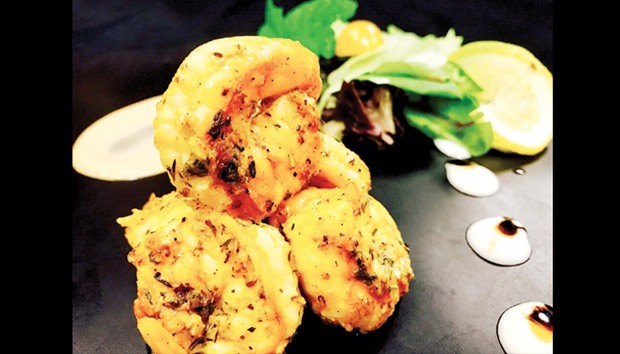I still have the memories of when I first landed in New Orleans in the United States of America in 2006 and went to an American restaurant to have a meal and read Cajun Shrimp as one of the dishes on the menu.
I instantly ordered it as I wanted to taste the real Cajun dish in the land where it originated. Whenever I travel I make sure that I try out their local delicacies and research about how those dishes evolved to their present day form. The dish arrived and I saw shrimps prepared in Cajun style on wooden skewers along with some rice and salad on the side. I can still recall that wonderful taste of Cajun spice in my mouth when I think of my first meal in USA.
So, in this week’s column I’ll explain what Cajun exactly mean and how the cuisine evolved with time.
Cajun are an ethnic community living mainly in the state of Louisiana. They are the French speaking descendants of the Maritimers from Eastern Canada. Nowadays Cajuns make up a significant portion of south Louisiana’s population and have a major role in the food culture. Cajun flavour/cuisine is spicy, rich and tastes really good.
Initially, Cajun food started as a poor man’s food – they would prepare whatever they had and spice it up and serve along with rice. This the reason rice is a Cajun staple. Adding rice – which is economical – would increase and stretch the portion of the food which was then sufficient to feed large families. Nowadays the rice is still served along with Cajun food, not as a necessity or to save cost but as a staple and integral part of the Cajun cuisine.
Cajun spices always consist of three things – peppers, onion and celery. They are like the favourite vegetables to add flavour to Cajun food. The combination is often referred to as the “Holy Trinity”.
Cajun food hasn’t changed much over the years and that’s probably what makes it so charming and classical. If you are visiting New Orleans, Louisiana or Mississippi you’ll always find restaurant menus with Cajun dishes, along with burger and fries.
Cajuns, due to their proximity with the Gulf of Mexico, have a lot of seafood in their food. They like craw fish, crabs, oysters and other popular local seafood delicacies.
There is often confusion about Creole and Cajun cuisines, and many people consider them as same. However they are different from each other. Creole originated when the European immigrants settled around the area around 1690, and these folks brought with them the influence of European cuisine and traditions. Most of them were the upper class aristocracy so Creole today is seen as a classier, fine cuisine, while Cajun is associated more with the common class. One more difference is that Cajun also uses wild vegetables and game animals and is also associated with one-pot-meals with dark rich gravies and sauces. A typical Creole sauce is lighter in colour with a more delicate flavour.
The Creoles that settled in the Louisiana area enjoyed fairly rich lifestyle. After few years, African food trends caught on. This led to the introduction of okra in some of the dishes, especially soups. And since the African word for okra is “Gumbo” that is what we call the signature dish of Louisiana Creole cuisine.
Cajun Shrimps
Ingredients
Shrimps, 16-20 1 lb
Olive oil 1 tbsp
Garlic clove 2-3 nos
Paprika powder 1 tsp
Thyme herb 1 tsp
Oregano 3/4 tsp
Garlic powder 1/4 tsp
Salt to taste
Black pepper to taste
Cayenne pepper 1/4 tsp
Lemon juice 1 tsp
Bell peppers, diced 1 no
Onion, diced 1/2 no
Celery stalk, diced 1 no
Method
De-vein and wash the shrimps and keep aside.
Crush the garlic and add to oil and lemon juice. Rub the mixture onto the shrimps and keep aside in the refrigerator for 30 minutes.
Combine paprika, thyme, oregano, garlic powder, salt, pepper and cayenne pepper in a sealable bag.
Shake well to combine the ingredients well.
Add shrimps and diced vegetables to the bag and shake well to coat the mixture all over.
Heat oil in a large non-stick skillet over medium heat.
Add the shrimps and cook until they are bright pink on the outside.
Make sure that the meat is not transparent in the centre – the cooking should take approximately 4-5 minutes.
Serve hot with steamed rice and salad on the side.
Serve the remaining sauce in the skillet as the accompanying sauce.

Cajun Shrimps


